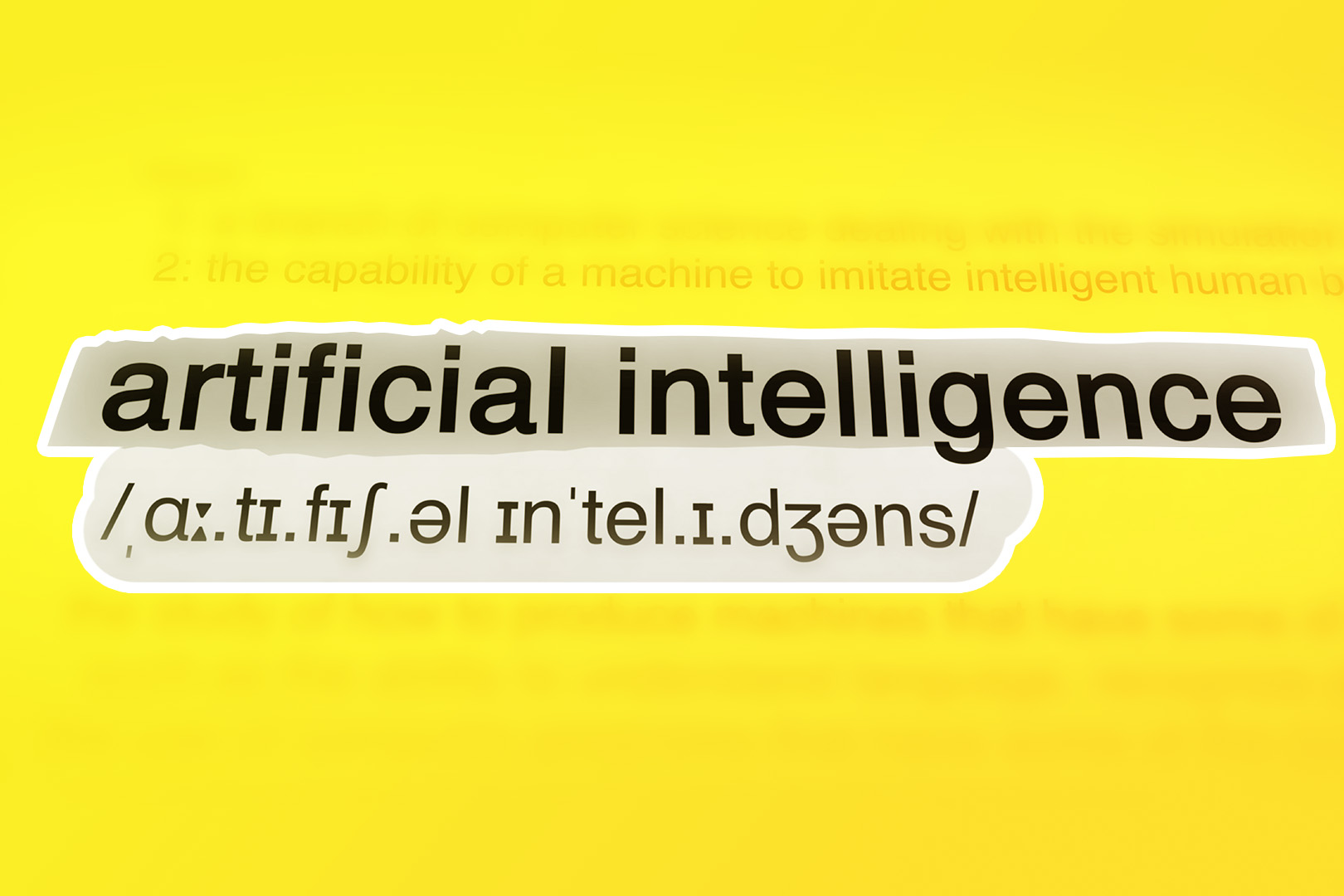You’re in sales. A brilliant communicator. A natural people-person. So obviously you wanted to pursue a career in cleaning CRM data, drafting email follow-ups, and poring over sales transcripts, right?
Wrong, we hope. That doesn’t sound fun.
Yet for many SDRs (sales development representatives), getting bogged down in admin and data cleanup is the reality.
Research shows sellers spend 71% of their time on non-selling tasks. Research. Admin work. Sales forecasting. Data entry. And this is a massive productivity leak that you can easily solve by learning about prompt engineering.
But you probably didn’t get into sales to learn “prompt engineering,” either. We get it. Don’t worry—prompt engineering is just a simple phrase that means learning to prompt well. You’re not converting from a life in sales to a life in CRM machinery. You’re simply learning how to use today’s AI tools well enough to get your time back. (And stay ahead of the curve.)
That all relies on one skill: learning to speak clearly to your AI.
The 3 Elements of Prompt Engineering for Sales
Writers have a rule they call Show, Don’t Tell.
Rather than say “Sarah was nervous about the interview,” it’s more precise and vivid if you write about the slickness of Sarah’s palms as the receptionist calls her name.
Why? Good communication is all about specific details.
The more specific you get when you write your prompts, the better AI can understand what you want. In the realm of prompt engineering, that typically means three pillars:
- Context: This is the information about why you’re doing what you’re doing, or who the audience is. Before you give the prompt, you might inform the AI: I’m gathering information from sales transcripts to offer coaching recommendations. Please…
- Clarity: AI works on a system of rules and guardrails. If you don’t supply them with specific numbers and details, it will invent its own. You don’t want this. So instead, let’s say you’re using an AI outreach tool. Would you tell it: “draft an outreach email”? Not specific enough. Instead, tell it: Draft a follow-up email to someone who never replied.
- Creativity: AI does well when you tell it to roleplay. Let it wear a hat. Is it a sales coach today? A plumber poring through CRM data to find leaky workflows? Before you tell it precisely what to do, tell your AI tool what role you want it to play first. Imagine you are a consultant offering five recommendations…
Sound like a lot? It’s important because these three Cs are where AI fails most users.
If you don’t tell it what you want, what it’s doing, and why it’s doing it, AI tends to default to generic results.
And you don’t want generic results.
Good prompt engineering tells AI precisely what thinking to do, then lets it get to work doing what it does best. It saves you time.
The Anatomy of Great AI Prompts for Sales Prospecting
You are an SDR at a SaaS company focused on identifying best-fit leads to schedule for your AE. Your goal is to book a quick intro call. Draft an email to this individual, keeping a tone of friendly, credible professionalism. Keep this initial email under 90 words, and include a light CTA about improving rev ramp time. Below, you’ll see a few examples of emails that do this well.
There. A prompt that hits all three Cs. It’s detailed, informative, and specific. But maybe your goals are different. How can you make a prompt that looks like that while changing the details?
Tina Huang, an ex-Meta data scientist turned YouTube content creator, makes it easy to build prompts with her Tiny Crabs Ride Enormous Iguanas framework.
(It’s a neat memory trick. TCREI actually stands for Task | Context | References | Evaluate | Iterate).
With that framework in mind, let’s examine what your prompt needs:
- Task: What is the AI to do after you press enter? What is its job, and what is the specific output? “Draft an email…” is the command here.
- Context: What is the purpose of this? “Your goal is to book a quick intro call.” You’ll also explain the role the AI needs to adopt, and then the context in which its output should appear.
- References: What should the output look like when AI is ready? You prompt this by including a few tone examples that show AI how it’s done.
- Evaluate: Huang notes that you should expect AI to get you 80% of the way there on the first try. So try to see what’s working—or not working—and adjust as appropriate.
- Iterate: Now try the prompt again. How does it work this time?
Typically, a good prompt includes details like role (what hat is AI wearing?), audience (who is that for?), objective (what is the AI supposed to do?), tone/style (do you include examples?), and constraints (what limits or rules matter?).
Include all the above, and you’ve got a killer prompt.
How SDRs Can Use AI & ChatGPT Prompts for Sales
Prospect research
Stop scouring LinkedIn or scraping Google for lists of potential businesses you can work with. Use AI to summarize background information and find relevant triggers that say: “This sounds like a potential customer.”
Example: “Summarize this prospect’s company in two sentences and list three possible pain points if they sell a B2B SaaS product.”
The “engineering” part of this prompt is all about incorporating details that align with the goals of your business. What matters most? Audience? Goal? Tone? Include it all.
Personalized outreach
Most AI-drafted outreach emails sound robotic. The usual problem? Vague prompts. Leaving a robot to its own devices is going to sound robotic. Here’s a better way.
Example: “Write a 90-word email for a VP of Sales in the logistics space referencing a recent hiring push. Keep tone warm and credible, no buzzwords.”
Remember to keep iterating if you don’t like the first drafts. Add layers of specificity: tone, goal, context, restraints.
Call preparation
Prepping for a discovery call feels like homework. As a general rule of thumb, anything that feels like homework is a prime candidate for asking AI.
Example: “Create a 5-bullet summary of questions to uncover this prospect’s main pain points. Base it on their website and product positioning.”
Rather than spending 30 minutes clicking and dragging and copying and pasting, you’ve turned pre-call prep into a quick 3-minute scan of the essential details.
Handling objections and follow-ups
You’re a human, which is great. But you’re also a human, which is a problem. We humans also have emotions to contend with. And sometimes, when a prospect says something like “the timing isn’t right,” it’s our instinct to get defensive. Instead…
Example: “Draft a reply to a prospect who said the timing isn’t right. Keep it respectful but maintain momentum.”
Remember: what it spits out doesn’t have to be your final draft. It’s just a handy way to get something on the page that potentially keeps tabs on the sale. Defensiveness: removed.
Internal communication and CRM notes
AI can help SDRs summarize call notes, which means you’re not stuck with a pen and a pad.
Example: “Summarize this call transcript in five bullets, focusing on pain points, budget timing, and next steps.”
Pop the output into your CRM and you’ll have a handy-dandy reminder of what comes next.
Common Prompting Mistakes (and What to Do Instead)
If all you did was follow the blueprint above, you’re already a steely-eyed prompt engineer. You’re ahead of most of the game. But prompting is still just as much an art as a science. It can get tempting to overcomplicate it to the point where you drop into bad habits. Here’s how to avoid that.
Think of these mistakes as a shortcut. Simply following the rules above will probably help you steer clear of them, but if AI feeds you something you don’t like, you can always revisit these. Maybe one of them will make you think: “Oh, that’s what I did wrong…”
Mistake #1: Being too vague
Bad: “Write me an outreach email that makes me a sale.”
Better: “Write me an outreach email to a SaaS founder who’s hiring SDRs, mention productivity or training pains, sound confident but not pushy.”
Remember: AI’s only going to hit the target if you tell it where the bullseye is.
Mistake #2: Ignoring the importance of context
If you’ve ever talked to AI like Claude or ChatGPT, you know it’s friendly. Don’t be fooled by the facade. It has no idea who you are. And as such, it has no idea about what you’re trying to accomplish unless you tell it.
So always include that context. Who are you? Who is the prospect? What is the current stage of communication? What tone do you want? What is your goal here?
Mistake #3: Expecting perfection in one go
“Engineering” is a bit of a misnomer. A quality engineer will build a bridge that doesn’t fall apart the first time. Because that’s also the last time.
Prompt engineering requires more finesse and more iteration. So feel free to poke at AI’s output and tell it what you need. Should it sound more casual? Does the email need to be 100 words or fewer?
Sometimes, the only way to tell when your prompt came up short is when the output gets something wrong that you forgot to include.
Mistake #4: Skipping reflection
AI has the occasional hiccup. It can hallucinate. It can give you something you didn’t specify to avoid in your prompt. It can pick the wrong tone if you ignore the social context.
That means as an engineer, you’re also a supervisor. You have to fact-check AI:
- Does it get your product details right?
- Is the tone appropriate for the context?
- Is it misunderstanding “the assignment”?
But this is all essential work. Because when you do find reliable results from a prompt, congrats. You’ve got something you can drop into Close or Notion and save time every time you paste it in.
The Benefits of Thinking Like a Prompt Engineer
We get it if you’re an SDR who doesn’t want to think of yourself as an engineer. So forget “engineer”! Think of yourself as the boss instead. You’re just learning what AI needs to follow your orders.
The better you get at describing what you want, the better you get at your job. AI can help you overcome objections, find holes in your workflows, and prep for big-time sales calls. The better you get at AI, the better you get at your job. So yes, it’s worth it.
When SDRs know how to use AI effectively, they:
- Spend less time on administrative work and more time on the human side of selling
- Produce cleaner, more relevant outreach emails—and do it faster
- Improve the quality of the insights they share with teams, especially from big data and transcripts
- Free themselves to focus on the relationship building that makes sales fun in the first place
- Future-proof themselves to developments in AI; after all, you’re already a prompt engineering master, aren’t you?
A little prompt engineering is an investment in how efficient you are at your job. And if you don’t invest in this, you might not be as efficient as the next SDR who does.
Feed the AI Well if You Want It to Take Care of You
Tech-averse sales folks, have no fear. A phrase like prompt engineering isn’t going to turn you into an AI convert overnight.
But hopefully, these tips will teach you not to fear AI. With specific, well-thought-out prompts, you’ll understand why something as simple as a language learning tool can make your life immeasurably easier.
Want to try it out? Start your free trial of Close and see how simple AI can really be.












